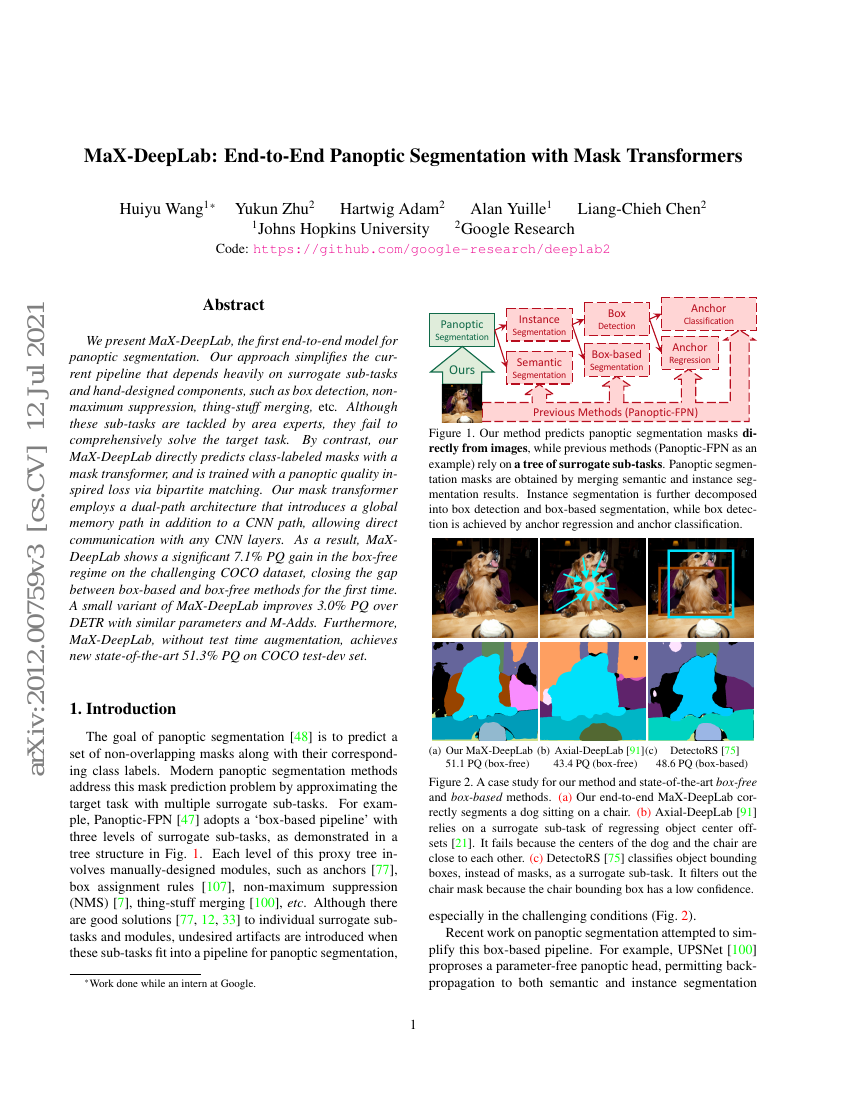Command Palette
Search for a command to run...
Huiyu Wang Yukun Zhu Hartwig Adam Alan Yuille Liang-Chieh Chen

Abstract
We present MaX-DeepLab, the first end-to-end model for panoptic segmentation. Our approach simplifies the current pipeline that depends heavily on surrogate sub-tasks and hand-designed components, such as box detection, non-maximum suppression, thing-stuff merging, etc. Although these sub-tasks are tackled by area experts, they fail to comprehensively solve the target task. By contrast, our MaX-DeepLab directly predicts class-labeled masks with a mask transformer, and is trained with a panoptic quality inspired loss via bipartite matching. Our mask transformer employs a dual-path architecture that introduces a global memory path in addition to a CNN path, allowing direct communication with any CNN layers. As a result, MaX-DeepLab shows a significant 7.1% PQ gain in the box-free regime on the challenging COCO dataset, closing the gap between box-based and box-free methods for the first time. A small variant of MaX-DeepLab improves 3.0% PQ over DETR with similar parameters and M-Adds. Furthermore, MaX-DeepLab, without test time augmentation, achieves new state-of-the-art 51.3% PQ on COCO test-dev set. Code is available at https://github.com/google-research/deeplab2.
Code Repositories
Benchmarks
| Benchmark | Methodology | Metrics |
|---|---|---|
| panoptic-segmentation-on-coco-minival | MaX-DeepLab-L (single-scale) | PQ: 51.1 PQst: 42.2 PQth: 57.0 |
| panoptic-segmentation-on-coco-test-dev | MaX-DeepLab-L (single-scale) | PQ: 51.3 PQst: 42.4 PQth: 57.2 |
Build AI with AI
From idea to launch — accelerate your AI development with free AI co-coding, out-of-the-box environment and best price of GPUs.